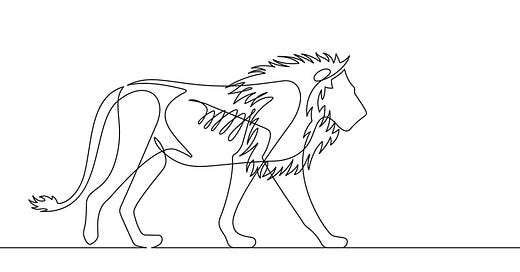I was working on another entry, but let me just interrupt myself for one minute to say that I am obsessed with this video of two Florida panthers fighting:
This is from National Geographic article published back in April that I just happened to run across this week.
There’s the drama of the actual cat fight but *on top of that*, there’s a wild hog who mysteriously wants to get in on the action, as well as a whole bunch of crows who can be heard mobbing, or about to mob, the predators.
The fight takes place on land owned by Andres Pis, a hunting guide and land manager. Pis and Mike Elfenbein run a Facebook group, the Panthers of South Florida, where they post regular updates on their encounters with the big cats and their frustrations with conservation efforts.
Meanwhile, the Florida Fish and Wildlife Commission and non-profits like the Florida Wildlife Federation also have panther conservation efforts. Each of these outfits — the private landowners, the government agencies, and the NGOs — has an economic and emotional stake in panther conservation.
What everyone agrees on is that Florida’s current pace of development encroaches on the territory of the panthers — essential for males, who need up to 200 square miles of territory per panther.
What everyone disagrees on is how to conserve the panther. Pis and Elfenbein feel that the government agencies aren’t conducting enough controlled burns:
Despite being the Florida state animal and beloved by many, Florida panthers generate some controversy. Pis and Elfenbein say they resent being denied access to some federal lands set aside in part for the cats, such as the Florida Panther National Wildlife Refuge, as well as parts of Big Cypress National Preserve. These areas were once widely open for hunting deer, turkey, and other animals.
They say federal agencies do not properly manage Big Cypress, for example by not doing enough to foster populations of deer, and not conducting enough controlled burns to regenerate the vegetation and remove invasive species.
Other scientists and conservationists, including former Florida Wildlife Federation board member Franklin Adams, say Big Cypress National Preserve is doing a good job despite having limited resources, such as a lack of funding for controlled burns, and being hampered by lawsuits from various competing factions over management decisions.
The December 25, 2020 post on The Panthers of South Florida (which I’m not going to embed here, as there’s a pretty disturbing photo attached; click and scroll down to see the entry) states, “tens of millions of dollars spent erecting countless miles of fencing along south Florida roads, another swamp lion met its demise on the wrong side of the fence.” No matter how much fence we put up, he contends, the issue will always be development.
To me, this video, and the stories around it, has some really interesting echos of Africa. For one thing, I didn’t know you could get such great predator interaction so close to home, and I’m very eager to visit and try to catch a glimpse of it post-COVID!
But for another, it’s clear that, around the world, nature isn’t just nature. If I’m there, if I’m witnessing it, it’s people and society and clashes and interests and stakeholders.
I don’t know enough to even begin to be able to guess what the proper conservation approach might be for the Florida panther. All I know is that, to keep the comeback moving forward, we’ll need to apply in the U.S. all the lessons I’ve heard about while on safari in Africa concerning involving local stakeholders and creating buy-in.
Just as NGOs go around talking to local leaders and tribes to come to some agreement concerning a local lion population in Kenya, so too will it be critically important for local organizations to help the local Florida population come to some consensus on the best conservation approaches when balancing the needs of Florida people with the Florida panthers. (Investment in conservation will also be an important part of this discussion.)
We’ve had a number of recent environmental successes in the United States lately, like introducing the wolves in Yellowstone, or the humpback whales in Hawaii and Alaska. I’m looking forward to (hopefully) watching us build on these successes with the Florida panthers, too.
(Big predator outreach actives already occur in the U.S., BTW, particularly concerning coyotes. Check out this guide to living with coyotes, which are now in every state except Hawaii.)



